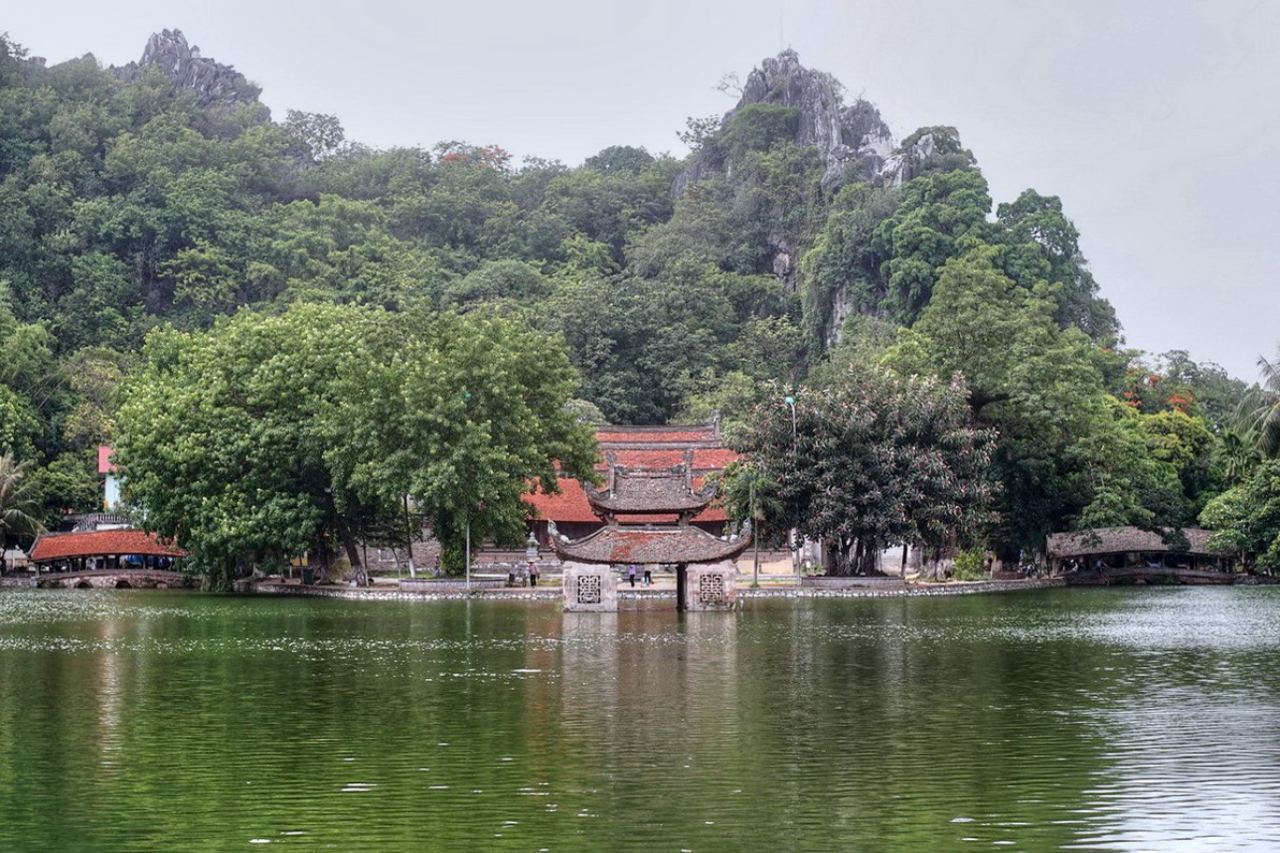Temples and pagodas are one of the spiritual cultural features of Vietnamese people in general and of Hanoi people in particular. Every temple in Hanoi, big or small, has a unique history and architecture, attracting many people to visit and sightsee. In addition, these sacred temples are also a place to pray for peace for oneself and one’s family, or simply, a place where people come to calm their souls before the noise of life.
1. Tran Quoc Pagoda
Located on a small island east of West Lake, Tran Quoc Pagoda appears majestic and beautiful, intact as it was when it was created 1,500 years ago.
This pagoda was originally Khai Quoc Pagoda, once the Buddhist pilgrimage center of the entire Thang Long capital during the Ly and Tran dynasties. Today, Tran Quoc Pagoda is famous for its extremely unique architecture, like a blooming lotus, luxurious yet peaceful in the middle of a vast lake, creating a feeling of absolute relaxation and peace for pilgrims.
Tran Quoc Pagoda’s structure and interior comply with the order and principles of Buddhism with the red six-degree lotus stupa standing out in the middle of the temple grounds. With historical, spiritual, and architectural values, Tran Quoc Pagoda deserves a place for you to stop and admire every time you come to Hanoi.
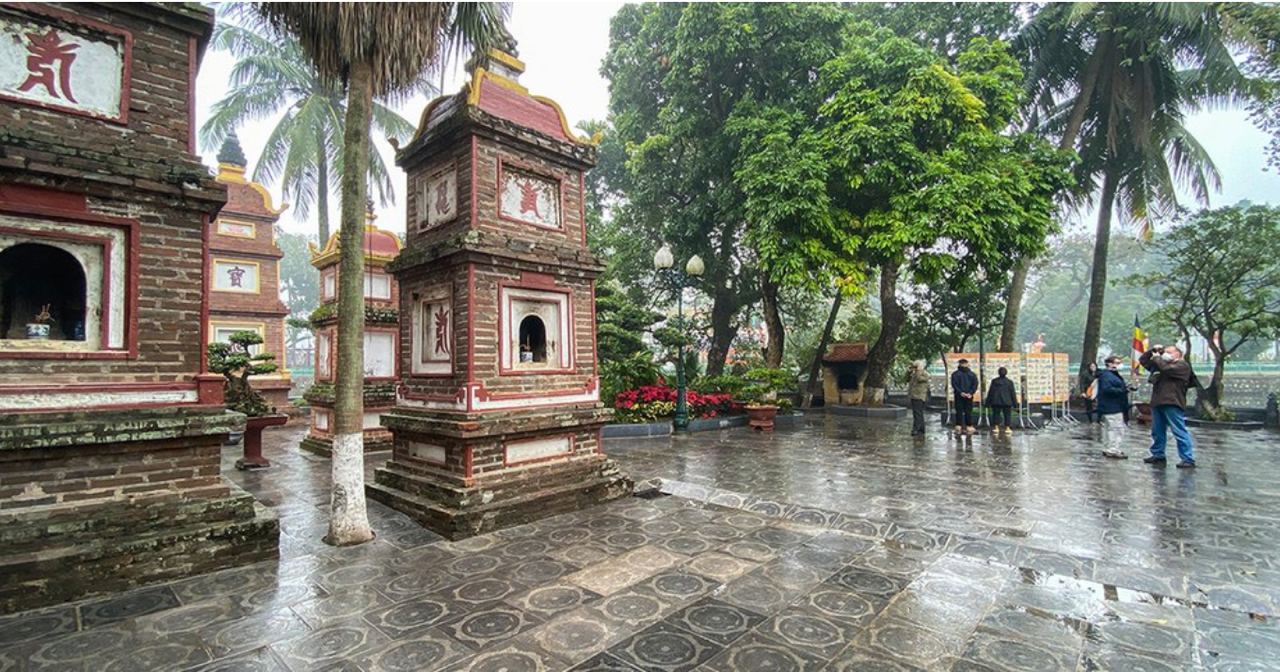
Address: Thanh Nien Street, Yen Phu Ward, Tay Ho District, Hanoi City
2. Huong Pagoda
Huong Pagoda, or Huong Son Pagoda, is a religious-spiritual complex located on the right bank of the Day River. This place includes many temples worshiping Buddha, and communal houses and temples worshiping gods according to ancient agricultural beliefs.
The Huong Pagoda complex was formed in the 15th century, with many architectural works scattered in the Yen Stream valley, divided into the Ngoai Pagoda area, which is Thien Tru Pagoda, and the Trong Pagoda located inside the natural Huong stone cave.
Every spring, when the apricot blossoms bloom white in the Huong Son region, it is also the time when a large number of Buddhists as well as tourists from all over come to visit the Huong Pagoda festival. Boating, mountain climbing, listening to Cheo singing, literature singing, etc. These are unique and interesting activities when going to the Huong Pagoda Festival, which takes place from January to March of the lunar calendar every year.
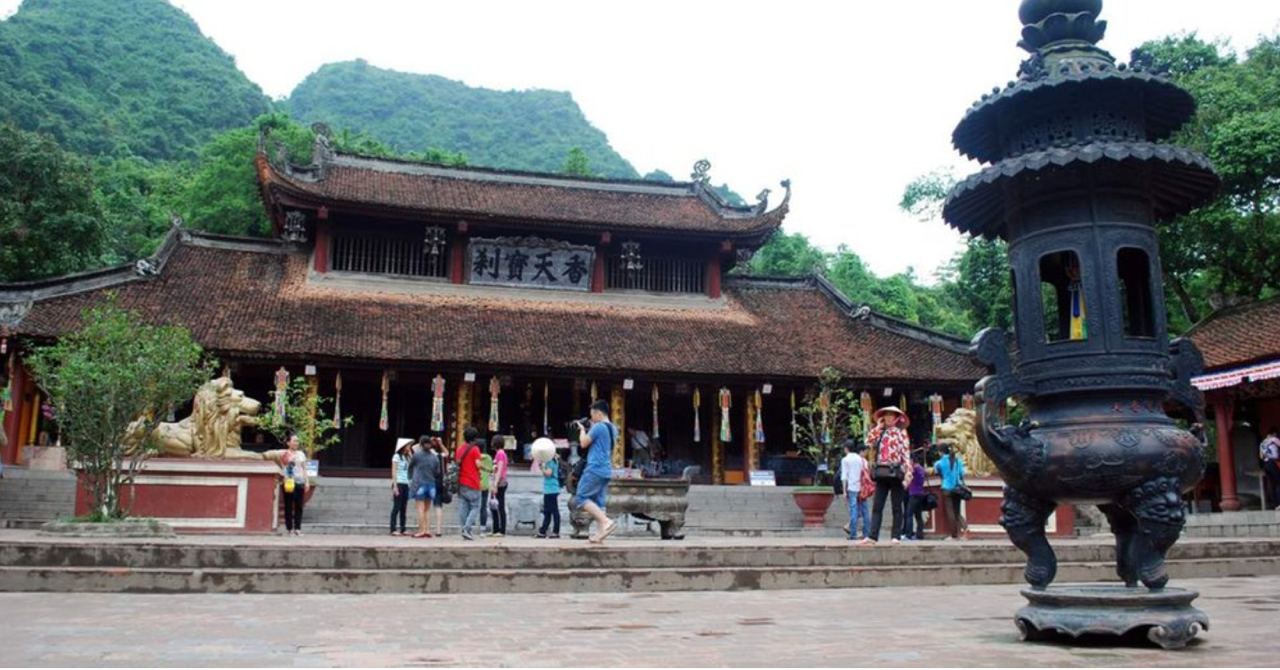
Address: Huong Son Commune, My Duc District, Hanoi City
3. Pho Quang Pagoda
A historical and cultural relic of the Tran Dynasty that appeared 800 years ago is Pho Quang Pagoda, also known as Tinh Quang Pagoda, created and established by Tam To Truc Lam Yen Tu, and became a great scenic spot. Scenery of the country under the reign of King Le Thai Tong.
Similar to many pagodas in Northern villages, Pho Quang Pagoda has a communal area to worship the village tutelary god and Buddha. Having gone through many historical upheavals and many restorations, Pho Quang Pagoda today no longer has its original shape, however, there is still a system of round statues on the temple porch that is of great artistic value.
Pho Quang Pagoda is about 15km north of Hanoi center, so you will have the opportunity to browse the beautiful Northeast Delta, especially the dyke road along the romantic Duong River.
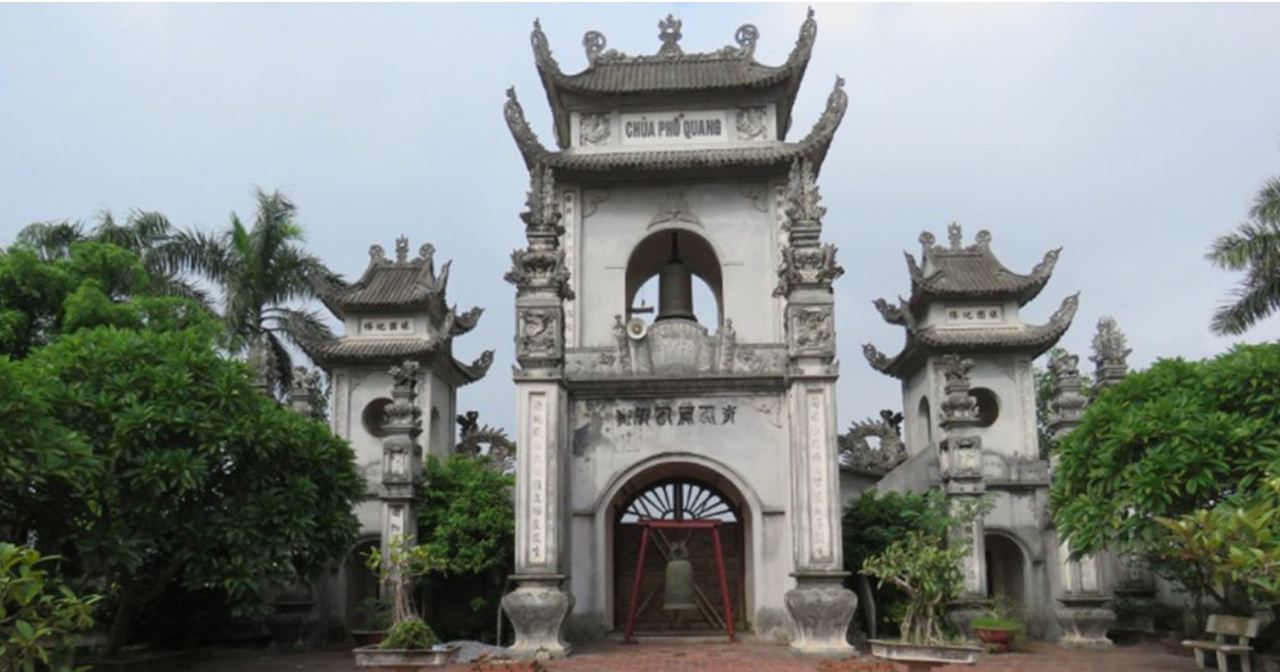
Address: Tinh Quang Village, Giang Bien Ward, Long Bien District, Hanoi City
4. Phap Van Pagoda
Phap Van Pagoda, also known as Nanh Pagoda or Ca Pagoda, is one of the famous ancient pagodas in Hanoi. The pagoda was built in the 11th century, during the Ly Dynasty, and has undergone many restorations but still retains the ancient sculptural lines of the pagoda.
The architecture of the pagoda does not start with the Tam Quan gate but the Ngu Mon gate similar to the architecture of temples in Vietnam. In addition, within the pagoda grounds, there is also a prominent Water Temple located on the lake, which was the place where water puppet performances were held during festivals at the pagoda in the past.
Along with Dau Pagoda, Keo Pagoda, and Dau Pagoda, Phap Van Pagoda is the place to worship one of the Four Dharmas in folk beliefs. Currently, inside the pagoda, there are many Buddha statues, along with many rare antiques dating back thousands of years.
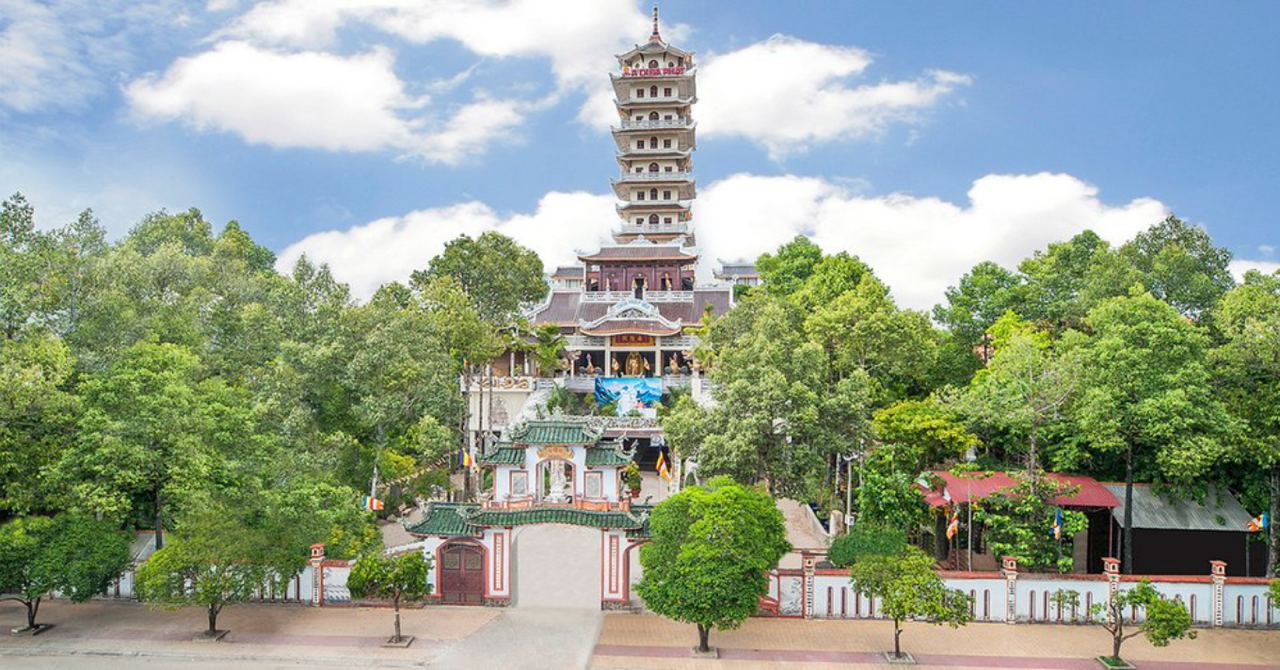
Address: Nanh Village, Ninh Hiep Commune, Gia Lam District, Hanoi City
5. Quan Su Pagoda
Quan Su Pagoda has appeared since the 15th century, originally a building built by King Le The Tong to welcome envoys from neighboring countries. Because the envoys were all devout Buddhists, a temple was built inside the campus so they could have a place to worship. After many ups and downs over time, the envoy’s house was lost, and only Quan Su pagoda remains today.
The pagoda’s architecture is imbued with the style of the ancient Northern region with domes, scaled tiles, three-story roof gates, and a bell tower in the middle. In particular, the pagoda’s name and parallel sentences in the pagoda use the national language.
Not only is it a sacred ancient temple, Quan Su Pagoda is also known as a Vietnamese Buddhist center. The Vietnamese Buddhist Research Institute in Hanoi and the representative office of the Asian Buddhist Organization for Peace in Vietnam (ABCP) are also located here.
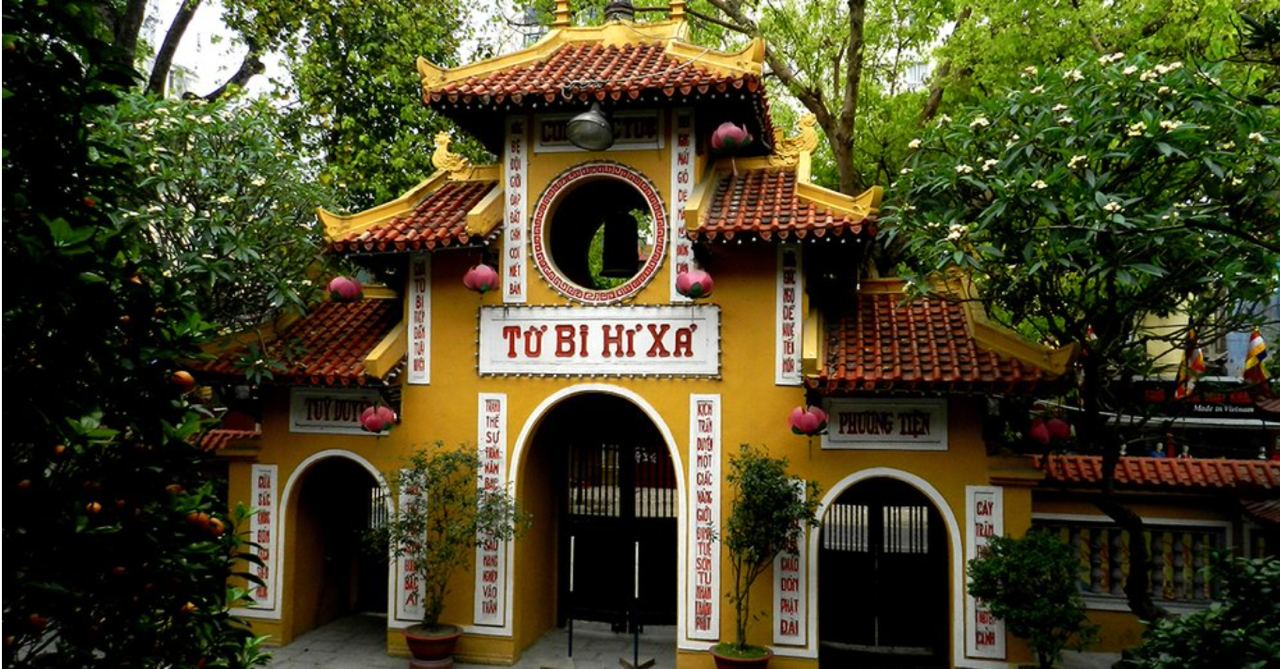
Address: 73 Quan Su Street, Tran Hung Dao Ward, Hoan Kiem District, Hanoi City
6. Ha Pagoda
Ha Pagoda, with the literal name Thanh Duc Tu, together with Boi Ha Communal House, forms a cluster of communal house relics – Ha Pagoda in Cau Giay district. Ha Pagoda and Duyen Ninh Pagoda in Ninh Binh are two famous fate-praying pagodas in the North.
Ha Pagoda is estimated to have been founded in the Ly or Le dynasties, and through many wars and fires, Ha Pagoda was destroyed many times, thanks to the enthusiasm of the people of Dich Vong and Tho Ha villages in the past, the new pagoda was built, recreated, and preserved to this day.
Ha Pagoda is a national historical and cultural relic, attracting many visitors. In particular, on the days of Soc and Vong, Buddhists eagerly come to pagodas to pray for peace and love.
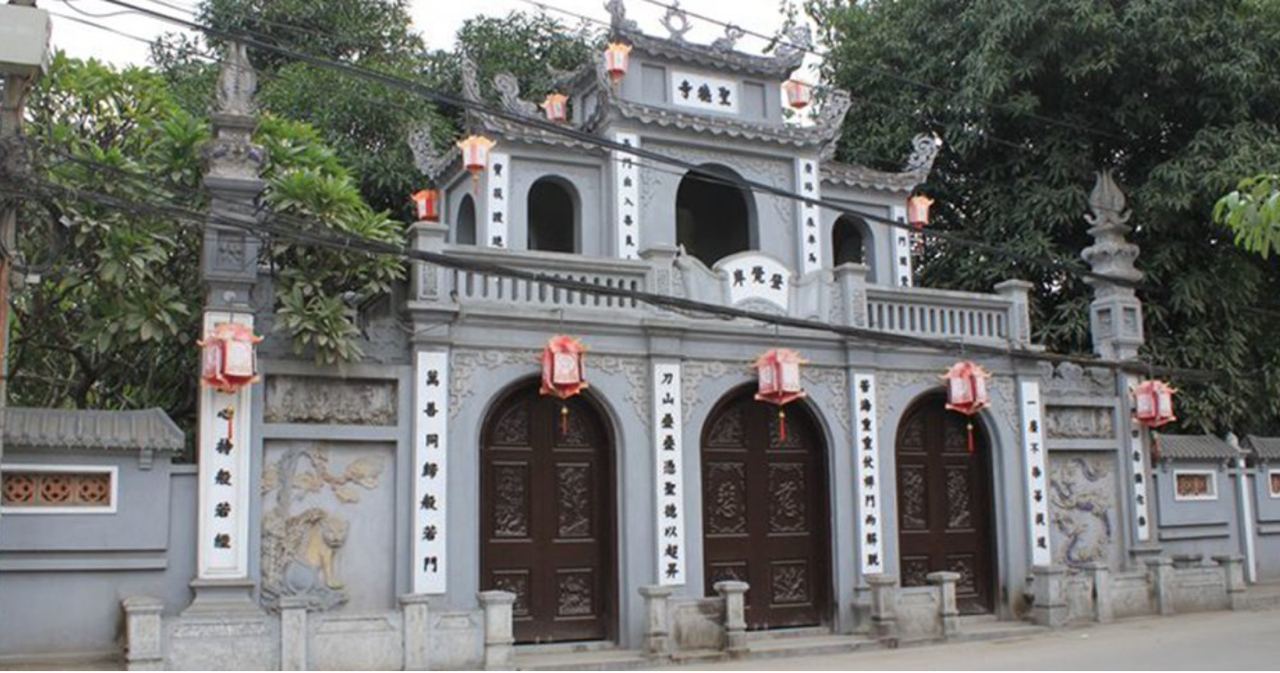
Address: 86 Chua Ha Street, Dich Vong Ward, Cau Giay District, Hanoi City
7. Mot Cot Pagoda
Along with Tran Quoc Pagoda, Mot Cot Pagoda is a rare pagoda that has become a symbol of the capital Hanoi, and is also an architectural complex that was awarded the title of National Historical-Cultural Monument for the first time.
Mot Cot Pagoda was built during the reign of King Ly Thai Tong, with another name: Mat Pagoda, or Dien Huu Pagoda. Among them, Lien Hoa Dai is the most prominent building in the pagoda complex, with unique architecture: a shrine placed on a single pillar, like a lotus blooming on the surface of the lake. This work was bombed and collapsed in 1954 and was restored in 1955 based on the design left over from the Nguyen Dynasty, led by architect Nguyen Ba Lang.
Today, Mot Cot Pagoda is one of the tourist attractions not to be missed when arriving in Hanoi and is recognized as the temple with the most unique architecture in Asia.
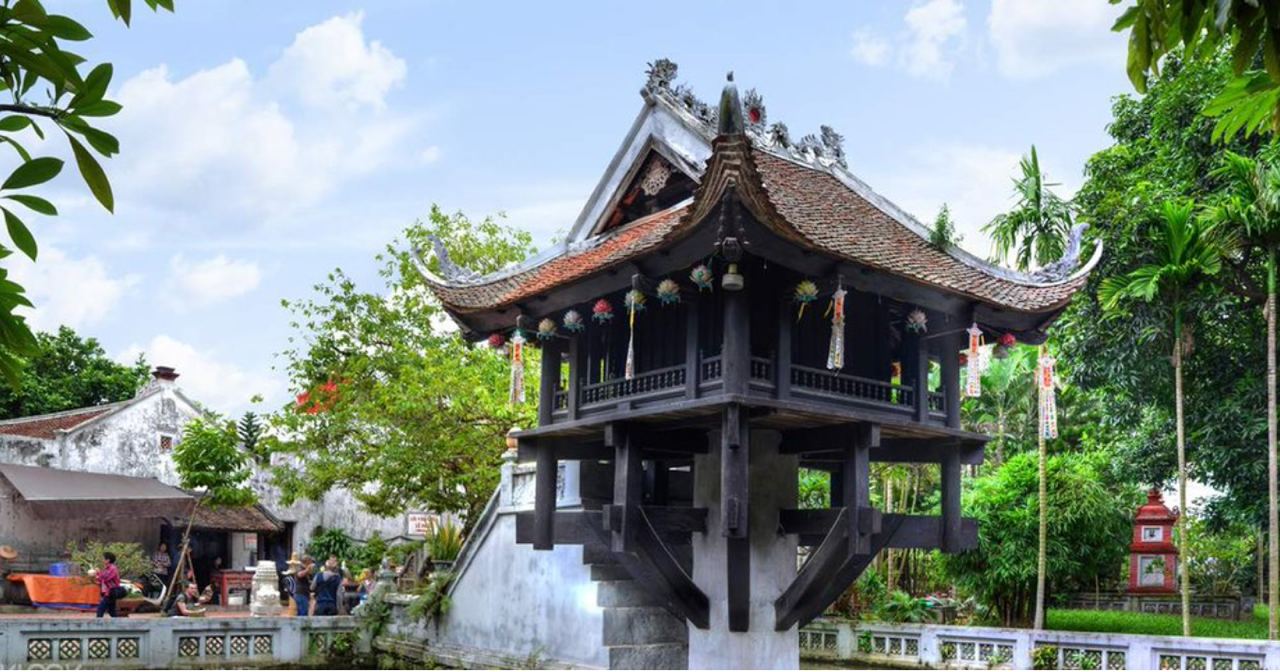
Address: Mot Cot Pagoda Street, Doi Can Ward, Ba Dinh District, Hanoi City
8. Khai Nguyen Pagoda
Khai Nguyen Pagoda’s full name is Co Lieu Tu, or Cheo Pagoda, built in the 16th century, during the Ly Dynasty, and currently owns the largest Amitabha Buddha statue in Southeast Asia. The pagoda is located in the middle of peaceful, beautiful countryside, with a square lake within the campus, green trees, flowers, and grass all year round, bringing fresh, pure air to Buddhists and tourists when coming to the pagoda. admire and relax.
Every year, Khai Nguyen Pagoda opens retreats to study Buddhist teachings for monks, nuns, and Buddhists. In particular, there are also short-term study retreats for young people, associated with volunteer and humanitarian programs.
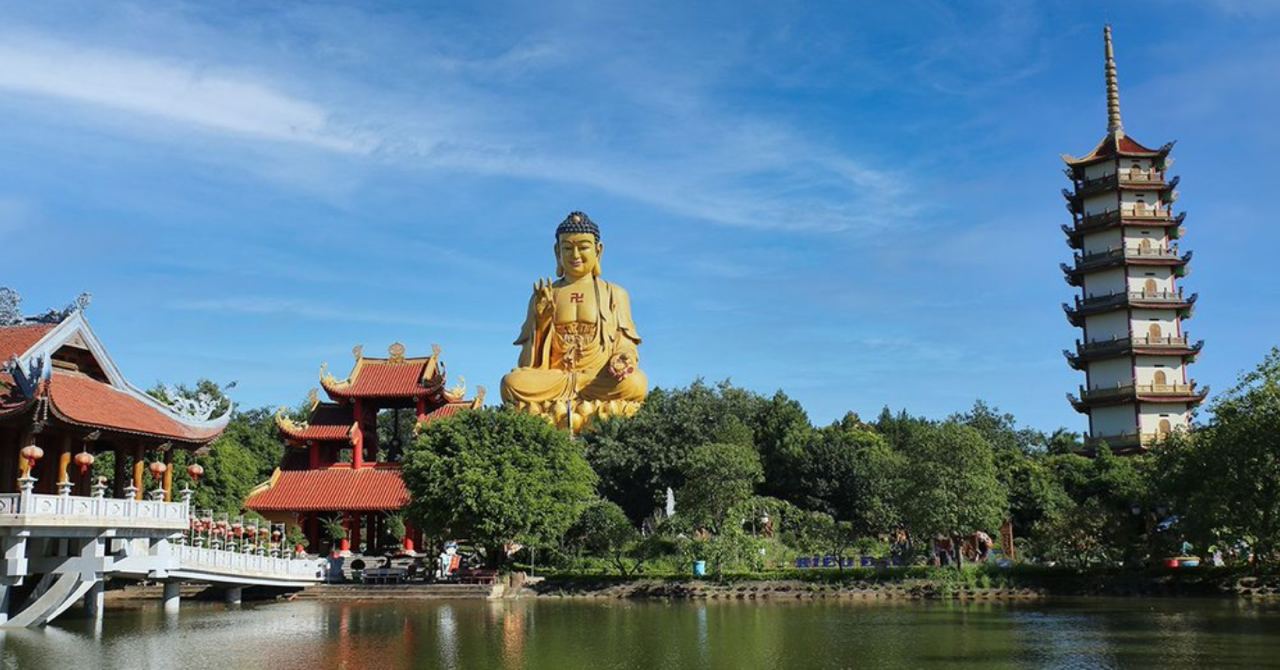
Address: Khoang Sau village, Son Dong commune, Son Tay town, Hanoi city
9. Thay Pagoda
Thay Pagoda, affectionately known as Ca Pagoda, is a harmonious natural and spiritual wonder, which creates a majestic landscape. Over the centuries, this temple has become an important cultural and spiritual symbol of the capital.
Built during the Ly Dynasty, Thay Pagoda is one of the country’s famous historical sites. This pagoda complex not only includes Ca Pagoda but also many other attractive attractions such as Cao Pagoda, Van Xuong Temple, and Cac Co Cave. Each place has something special and attractive to tourists.
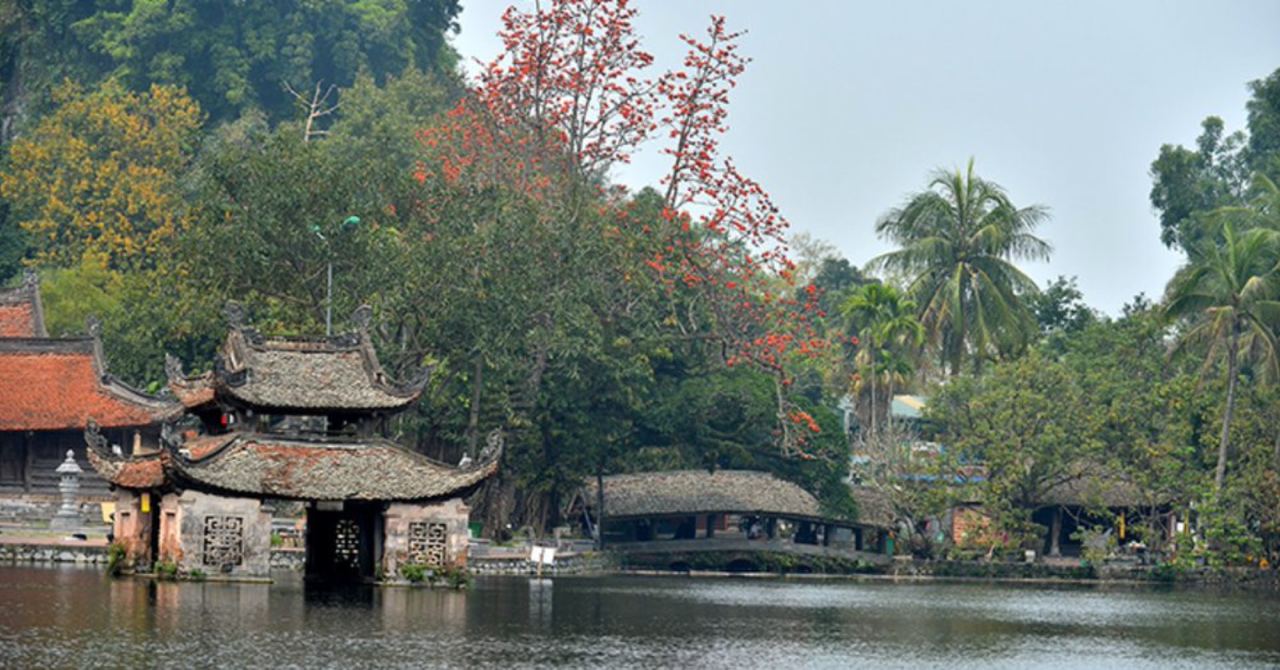
Address: foot of Sai Son mountain, Sai Son commune, Quoc Oai district, Hanoi City.
